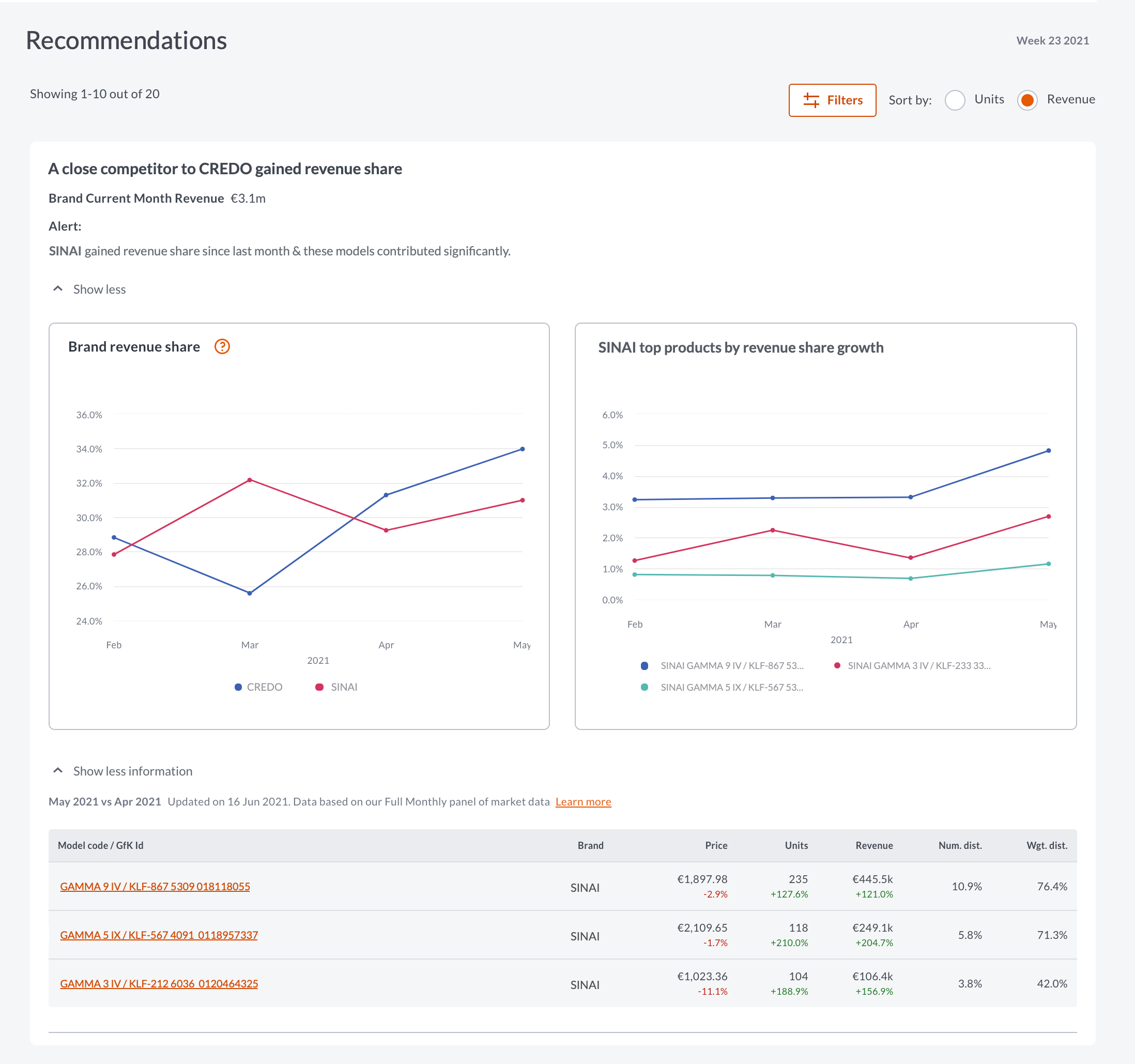Recommendations: User guide
See the risks, opportunities and sales notices identified for your brand.
What is it?
Recommendations offers a regularly-updated selection of actions and observations based on gfknewron’s AI-driven data analysis. Use them to help improve your brand or product performance.
What can I do with it?
Using recommendations means you can make better business decisions without having to filter through the data yourself. We prioritise recommendations for you, too, so you'll see actions for your top-selling products first. Each recommendation includes supporting data and if applicable, a suggested action to either make the most of the opportunity, or manage the risk.
Select Show more to see the supporting evidence for each recommendation.
We'll only show recommendations when we have enough data to support them. If you don't see any recommendations right now, try checking back next week.
How can I read this?
We display four different types of recommendations:
1. Cannibalisation threat
This is triggered when these two conditions are met at the same time:
- For any given model, we see at least one model from the same brand identified as competitors through the competitor insight (must be in the top 12 shown to users).
- The competitor (same brand) model has been within 10%* of the price of the focus item for each of the past 4 weeks (for higher priced items we use a 5% threshold, for lower a 15% one).*
2. Poor recent temporary price reduction
This is triggered when these two conditions are met at the same time:
- If focus item TPR Efficiency (for current week -7 to current week -4, as displayed on the product table) is the lowest (or only) value across all product models of the focus model brand.
- The TPR efficiency for this item over the specified period <1 (meaning the cost of the promotion outweighed the gain).
3. Potential competitor threat
This is triggered when these three conditions are met at the same time:
- Where the price of the top competitor model (of another brand, as identified via the competitor analysis) is within 10% of the focus item for each of the past 4 weeks.
- The price gap between the two models has decreased for EACH of the past 4 weeks.
- The sales units trend for the focus item over the past 4 weeks shows a decline.
4. Opportunity to increase a product’s price
This is triggered when ALL of the following conditions are met
- The Price Elasticity in the most recent period = 0.0
- The Level of Confidence in that Price Elasticity value does not equal 0
Things to keep in mind
- Our recommendations are suggested next steps based on the data shown. However, we can’t guarantee the impact our recommendations could have on your product.
- All recommendations are based on observations from weekly data.
- We only show recommendations that relate to models from your brand.
- It may be the case that in some weeks there are no relevant recommendations to show you, but recommendations are updated every week so check back the following week.

